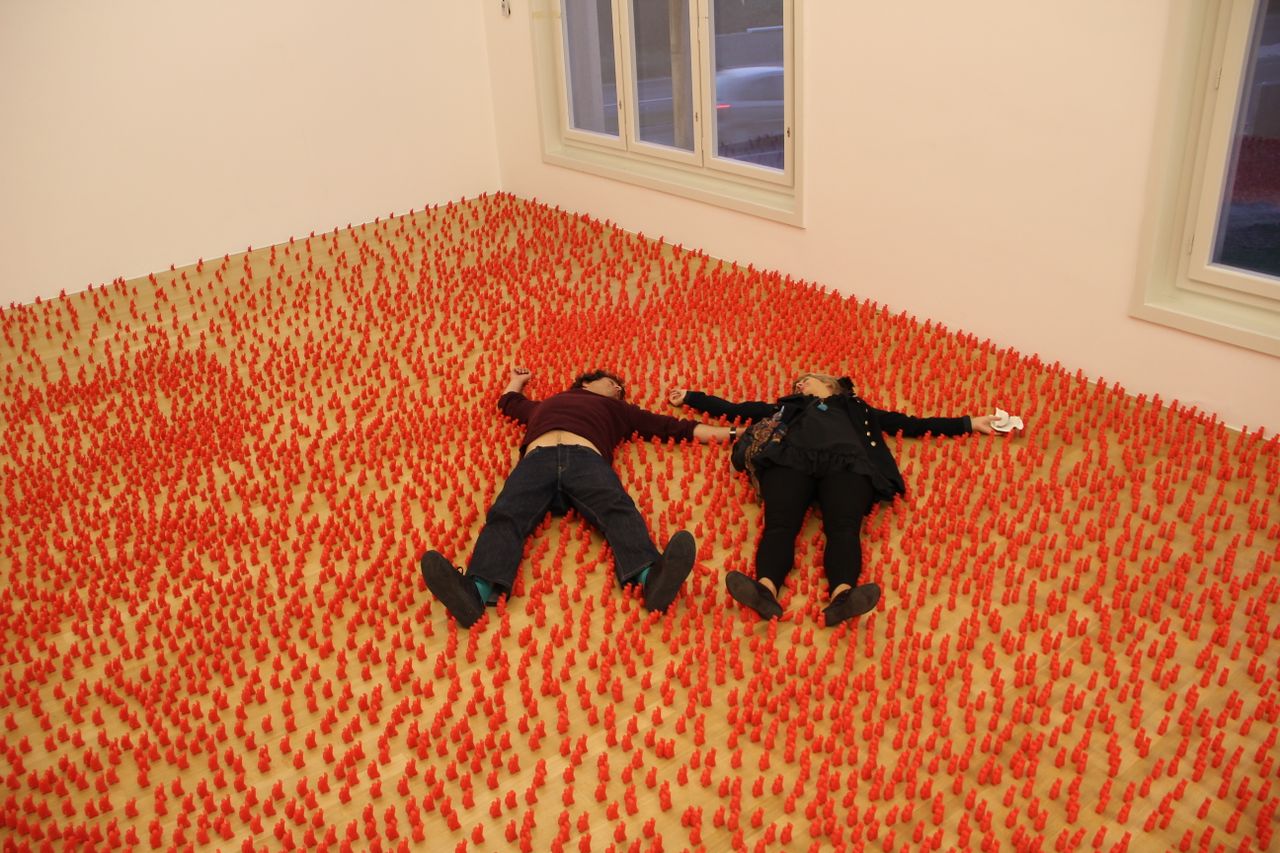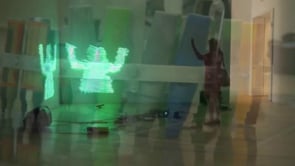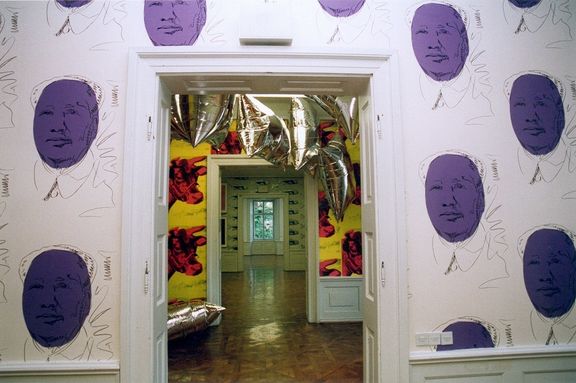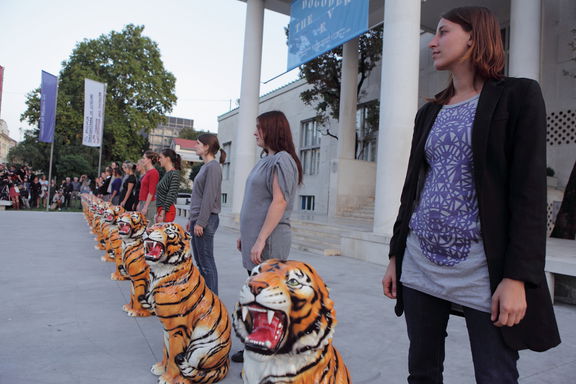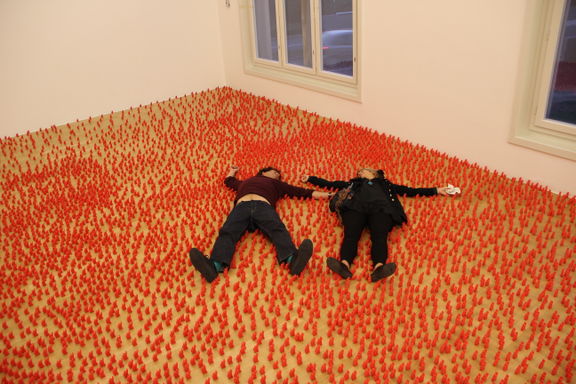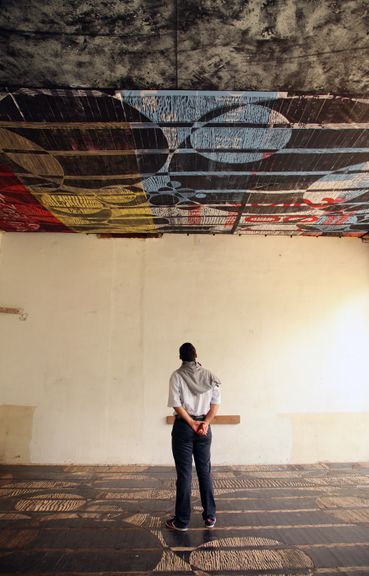Venues
In addition to the venue at the Tivoli Mansion, the Biennial of Graphic Arts takes place at several Ljubljana locations, the main ones being the Museum of Modern Art, Cankarjev dom and the Jakopič Gallery and, in recent years, the Švicarija Art Centre. It also occupies various smaller and independent galleries, a range of different urban open-air venues and the mass media.
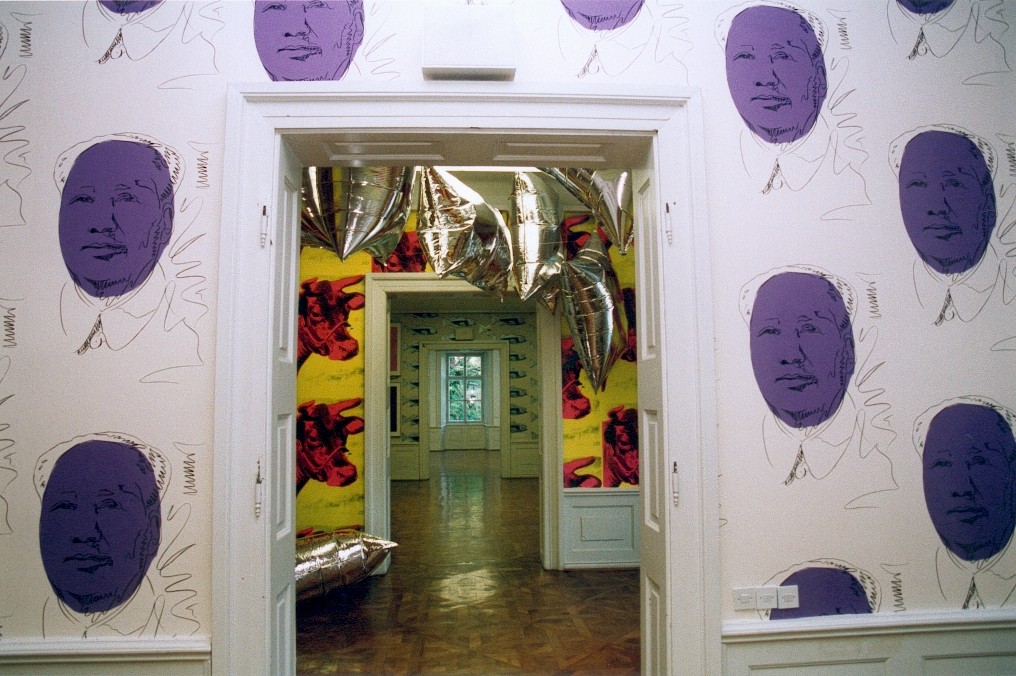 Installation of Andy Warhol's Mao wallpaper (1972) and Silver Clouds, in Fundamina, Zoran Mušič, Andy Warhol, and Mimmo Paladino, 24th Biennial of Graphic Arts, International Centre of Graphic Arts, Ljubljana, 2001.
Installation of Andy Warhol's Mao wallpaper (1972) and Silver Clouds, in Fundamina, Zoran Mušič, Andy Warhol, and Mimmo Paladino, 24th Biennial of Graphic Arts, International Centre of Graphic Arts, Ljubljana, 2001.
Prizes and retrospectives
Since the beginning of the Ljubljana Biennale of Graphic Arts, each edition presents regular retrospective exhibitions of prizewinners from the previous event. Many internationally established artists have received the Grand Prix and the Grand Prix d'Honneur, such as Robert Rauschenberg, Joan Miró, and Victor Vasarely in the 1960s and Frank Stella, Günther Uecker, David Hockney and Richard Hamilton in the 1990s. Twenty-first-century prizewinners include Damien Hirst and Raymond Pettibon in the 2000s, Regina José Galindo, María Elena González and Ištvan Išt Huzjan in the 2010s.
Other prizes include special jury awards determined by an international jury of high-profile names in graphic arts and audience awards.
For the most up-to-date list of prizewinners, see the Biennale's website.
International relevance
The Ljubljana Biennale of Graphic Arts has gained tremendous respect and influenced many international scenes and events. In its early stage, the Biennale became the model for other graphic art events and biennials in the world: in the 1950s, in Tokyo and Grenchen (Germany), in the 1960s, in Krakow and Florence (1968) and in the 1970s in Bradford (UK) and Fredrikstad (Norway). Among still-existing graphic biennials such as the Biennial in Krakow, the Triennial in Tallin and Grafika Creativa in Finland, the Ljubljana Biennale of Graphic Arts is still the flagship.
 Landmark: Footprint, 2001–2002, by Allora and Calzadilla: an artistic collaboration between Jennifer Allora and Guillermo Calzadilla (Puerto Rico). Part of the Trienal Poli/Gráfica de San Juan: América Latina y el Caribe, Puerto Rico, the Grand Prix winner of the 26th Biennial of Graphic Arts, 2005.
Landmark: Footprint, 2001–2002, by Allora and Calzadilla: an artistic collaboration between Jennifer Allora and Guillermo Calzadilla (Puerto Rico). Part of the Trienal Poli/Gráfica de San Juan: América Latina y el Caribe, Puerto Rico, the Grand Prix winner of the 26th Biennial of Graphic Arts, 2005.
Background
1955–1990s
From the very beginning, the aim of the Ljubljana Biennale of Graphic Arts was to exhibit the best works from the largest possible number of graphic artists representing contemporary trends on all continents. In line with this approach, the only selection criterion was the quality of a limited edition print in any printmaking technique. During the Cold War, which cut short virtually every dialogue between the West and the East, the organisers of the Ljubljana Biennale managed to bring together artists not only from the two opposing poles but also from the "Third World", in line with the policies of Non-Aligned Movement (founded in Yugoslavia in 1956).
1990s–2010
During the 1990s, a new perspective on art, favouring reproduction and multiplication techniques, gained a foothold. Towards the end of the 1990s, a new, more modern organisational approach was adopted. National presentations of artists gave way to individual presentations. The Biennale's organiser appointed curators, and the number of selected artists was radically reduced. Participating artists were represented by more works or a project.
A truly radical change occurred with the 24th Ljubljana Biennale of Graphic Arts in 2001. It was marked by certain changes, with emphasis placed on the substance of graphic arts in the context of newly emerging global art and the new internal organisational structure. Each of the four sections of the 24th Biennale was curated by one of a group of (inter)national curators. Featured were works of many established artists as Monica Bonvicini, Daniele Buetti, Claude Closky, Izabella Gustowska, Damien Hirst, Tracey Moffat, Thomas Ruff, Kara Walker, Zoran Mušič, Andy Warhol and others.
Since then, each edition has offered a new approach. For example, the 2003 edition, curated by Christophe Cherix, was based on the importance of the multiplied image as a means of communication. The common feature of the exhibited works – artists' books, newspapers and magazines, photocopies, posters, newspaper interventions and projects, and prints – is the fact that they document the artists' ideas about their realised or unrealised, past or future projects. The Biennale included works of participating artists Isa Genzken, Liam Gillick, Irwin, Raymond Pettibon, Permanent Food (Maurizio Cattelan & Dominique Gonzalez-Foerster), Tadej Pogačar & P.A.R.A.S.I.T.E. Museum of Contemporary Art and many other established artists.
The 26th Biennale entitled Thrust (Sunek) aimed to show the wide diversity of views on contemporary graphic arts. The curator invited 18 prestigious institutions from around the world to present an exhibition that attempted to answer the question: What are the graphic arts today? The participating institutions included: Bharat Bhavan International Print Biennial, Bibliotheque nationale de France, Birmingham Museums and Art Gallery, Brooklyn Museum, Calcografía Nacional, Real Academia de Bellas Artes de San Fernando, Graphica Creativa kansainvälinen taidegrafiikan triennaali, Istituto Nazionale per la Grafica and others.
The 27th Ljubljana Biennale of Graphic Arts brought eight views on art prints, the common thread of these different exhibitions being reproducibility of art. It was comprised of The Unbound Eyes of Anxiousness – the main exhibition; Stigma – the already traditional exhibition of the artist awarded the Grand Prix at the previous Biennale; and six accompanying exhibitions prepared by various galleries in Ljubljana.
The central exhibition of the 28th Ljubljana Biennale of Graphic Arts, The Matrix: An Unstable Reality was conceived by Božidar Zrinski and focused on contemporary graphic art in the broadest sense of the term. At the invitation of the International Centre of Graphic Arts, which proposed the main exhibition's theme, this idea was further developed and shaped by the Alkatraz, Ganes Pratt, Jakopič, Kapsula, and Škuc galleries, which also served as venues. Alongside the central exhibition and the traditional accompanying ones, the 28th Biennale included the Artist's Book Salon.
2011–present
The 29th edition in 2011 was curated by Beti Žerovc, who proposed that the "art event" become a privileged artistic medium. The event-based exhibition focused on four prevailing themes: generosity, violence, the search for the sacred and the ritualistic, and emptiness.
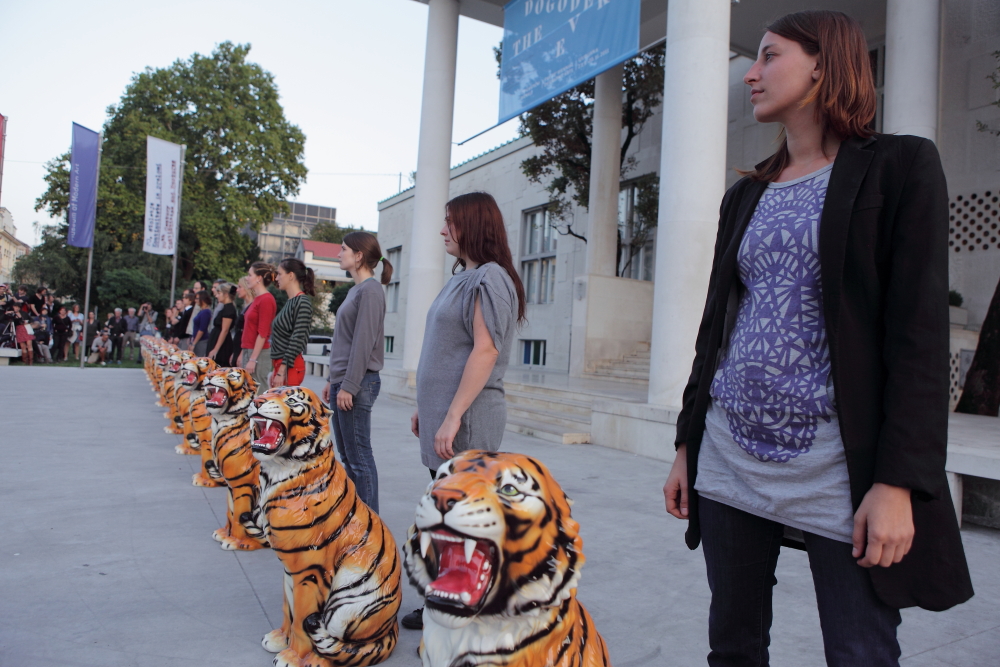
In 2013, the American curator Deborah Cullen returned to reconsider the nature of the graphic processes, showcasing the way in which the artists respond to contemporary communication tools and processes.
Nicola Lees was appointed as the curator of the 31st Biennial of Graphic Arts, which celebrated its 60th anniversary.
The 32nd edition of the Biennial in 2017 radically transformed the structure of the event: the main exhibition entitled Birth as Criterion was conceived by artists. The recipients of the Grand Prize of the past five Biennale editions – Jeon Joonho (2007), Justseeds (2009), Regina José Galindo (2011), María Elena González (2013) and Ištvan Išt Huzjan (2015) were invited to propose one artist to participate in that year's event. These artists were then invited to nominate the following five participating artists, and so on. Following this logic, about thirty artists were presented.
See also
Other regularly participating venues
External links
- Ljubljana Biennale of Graphic Arts website
- Historical Overview of the Ljubljana Biennale of Graphic Arts
- About the Ljubljana Biennale at the Biennial Foundation website
- The International Biennial Association (IBA) website


